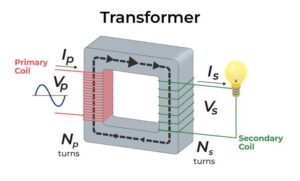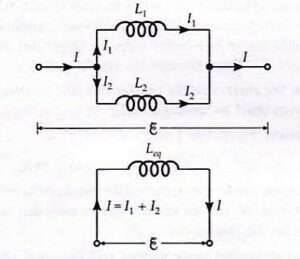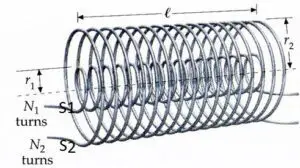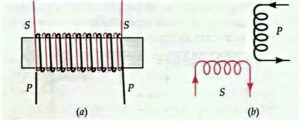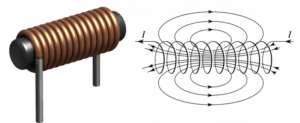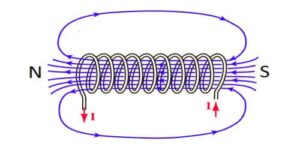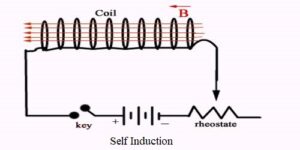Take a rotating metal disk, and try to rotate it. You will find it is easier to rotate but try to rotate it in between the magnetic poles. You will experience that it is not the same feeling as above. You will find it somehow harder to rotate, or formally you will need more energy to rotate it. Why did it so happen?
It happened due to the formation of eddy currents in the metallic disk. Eddy currents which are discovered by French physicist Léon Foucault (1819–1868) in 1855. On the name the discoverer, Eddy currents are also called Foucault’s currents. Eddy currents are induced within the conductor when a changing magnetic field is applied to the conductor.
In this article, we will discuss what are eddy currents? and their definition, causes, and applications. So let’s get started…
History of eddy currents
Eddy currents were first observed by the 25th prime minister of France, François Arago (1786–1853), who was a mathematician, physicist, and astronomer. In 1824 he observed what is called rotational magnetism and that most conductive bodies could be magnetized; These discoveries were further completed and explained by Michael Faraday (1791-1867).
In 1834 Emil Lenz stated his Lenz’s law that the direction of induced current flow in an object will be such that its magnetic field will oppose the change of magnetic flux that caused the current flow. Eddy currents produce a secondary magnetic field that opposes the change in the magnetic field that produced it.
But the French physicist Léon Foucault (1819–1868) is credited with having discovered eddy currents. In 1855, he discovered that the force required for the rotation of a copper disk becomes greater when it is made to rotate between the poles of a magnet, the disk at the same time becoming heated by the eddy current induced in the metal.
What are eddy currents?
Eddy currents definition: Eddy currents (also called Foucault’s currents) are the loops of electrical current induced within conductors by a changing magnetic field in the conductor according to the Faraday’s law of induction.
Eddy currents always flow in closed loops within conductors and lie in planes perpendicular to the magnetic field. If there exist any nearby stationary conductors, then eddy currents can be induced within that conductor by a time-varying magnetic field produced by an AC electromagnet or transformer, or by relative motion between a magnet and a nearby conductor. The magnitude of the current in a given loop is proportional to the
- strength of the magnetic field
- the area of the loop
- and the rate of change in flux
- and inversely proportional to the resistivity of the material.
If we try to draw the graph of these circular currents within a piece of metal, they look somewhat like eddies or whirlpools in a liquid that’s why they are called eddy currents.
Causes of eddy currents
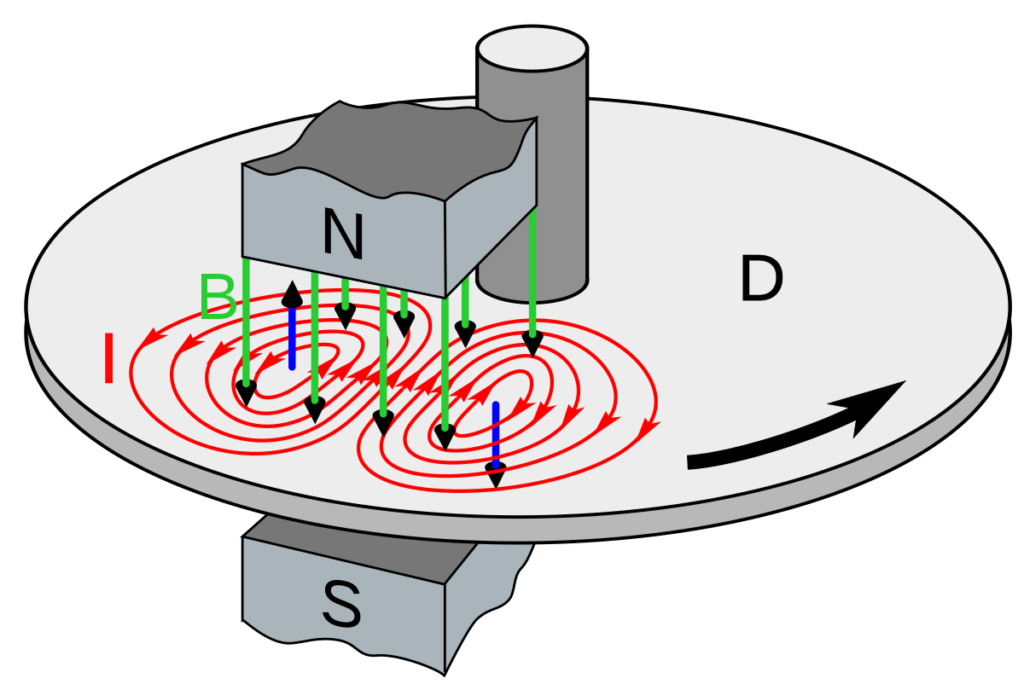
Whenever the metal sheet swings or moves through the magnetic field, the magnet which is the source of the magnetic field induces circular electric currents called eddy currents. See the diagram above, here a metal disk is rotating between the two magnetic poles. The magnetic field (B, green arrows) from the N-pole passes through the disk. Since the disk is rotating, the magnetic flux through a given area of the disk is changing continuously.
The disk is rotating anticlockwise. The part of the disk which is going inside the magnetic field (left side), at that part the magnetic field is increasing as it gets nearer to the magnet $\frac{dB}{dt} > 0$. From Faraday’s law of induction, a circular electric field is created in the disk in a counterclockwise direction around the magnetic field lines. This field induces a counterclockwise flow of electric current (I, red), in the disk. These swirling electric currents are eddy currents.
But as the part of the disk comes out of the magnet (right side), the magnetic field at that part of the disk is decreasing as it is moving away from the magnet, $\frac{dB}{dt} < 0$. This induces a second eddy current in a clockwise direction in the disk.
Eddy currents and Lenz’s law
In the case of eddy currents, Lenz’s law, says that eddy currents produce a magnetic field that opposes the change in the magnetic field that produced it, so due to this eddy currents oppose the source of the changing magnetic field. For example, a nearby conductive surface exerts a drag force on a moving magnet, resisting its motion, due to eddy currents induced on the surface by the moving magnetic field. This drag force (produced due to the induced eddy currents within the conductors) is used as brakes called eddy currents brakes to slow or stop the moving objects.
Watch this video for an experimental demonstration of eddy currents.
Undesirable effects of eddy currents
Eddy currents are produced inside the iron cores of rotating armatures of electric motors and dynamos, and also in the cores of transformers, which experience the flux changes when they are in use. Eddy currents cause unnecessary heating and wastage of power. The current flowing through the resistance of the conductor also dissipates energy in the form of heat in the materials.

Thus eddy currents are a cause of energy loss in alternating current (AC) inductors, transformers, electric motors and generators, and other AC machinery in the form of heat. To minimize heat loss, this machinery needs special construction such as laminated magnetic cores or ferrite cores. Eddy currents are also used to heat objects in furnaces and induction heaters, and to detect cracks and flaws in metal parts with eddy current detectors.
Properties of eddy currents
Some important properties of eddy currents are given below:
- Eddy currents generate heat as well as electromagnetic forces in conductors of non-zero resistance.
- The heat produced by the eddy currents can be used for induction heating.
- The electromagnetic forces produced by the eddy currents can be used for levitation, producing movement, or giving a strong braking effect.
- Self-induced eddy currents are responsible for the skin effect in conductors. Due to this, it can be used for non-destructive testing of materials for geometry features, like micro-cracks.
- Eddy currents can be distorted by defects such as cracks, corrosion, edges, etc.
Applications of eddy currents
Some important applications of eddy currents are given below:
Electromagnetic braking
Eddy currents are used as brakes called eddy current brakes to slow or stop moving objects. This braking system is used in modern railways for smooth stopping. During braking, the metal wheel of the train is exposed to the electromagnet. This rotating wheel under the electromagnet induces eddy currents in the wheel.
According to Lenz’s law, the magnetic field produces by the eddy currents opposes the cause. Thus the wheel faces a force opposing the initial movement of the wheel. If the wheels are spinning faster, the stronger will the effect be, meaning that as the train slows the braking force is reduced, producing a smooth stopping motion.
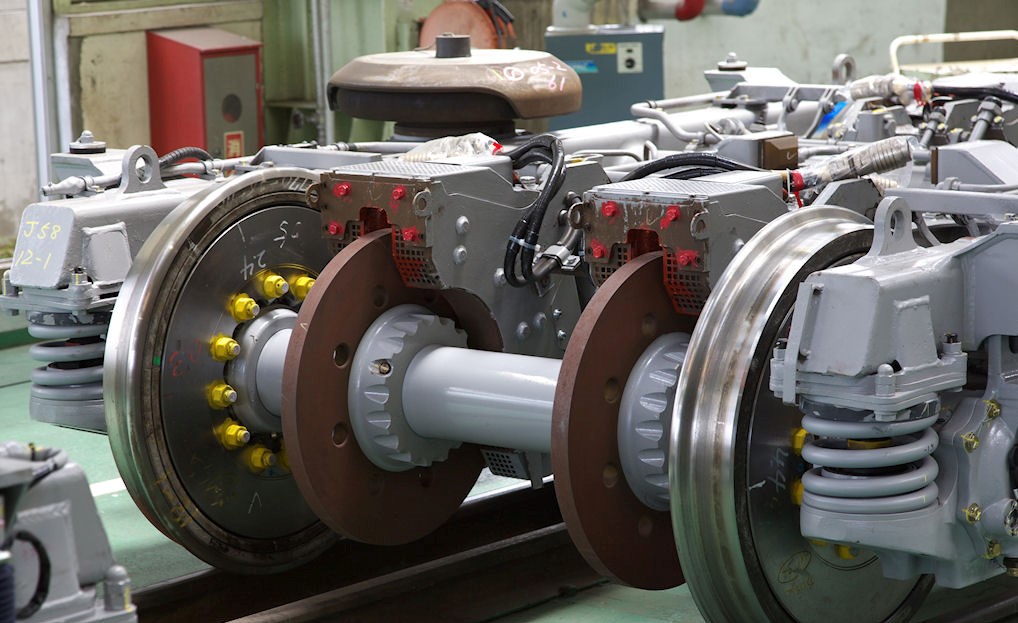
Repulsive effects and levitation or Electrodynamic suspension (EDS)
Electrodynamic suspension (EDS) is a form of magnetic levitation that involves subjecting conductors to time-varying magnetic fields. This induces eddy currents in the conductors that create a repulsive magnetic field that separates the two objects. Magnetic fields can arise from relative movements between two objects. In many cases, one magnetic field is a permanent field, such as a permanent magnet or a superconducting magnet, and the other magnetic field is induced by field changes that occur when the magnet moves relative to a conductor in the other object.
Electrodynamic suspension can also occur when an electromagnet driven by an AC power source creates the changing magnetic field; In some cases, a linear induction motor creates the field. EDS is used for maglev trains like the Japanese SC Maglev. It is also used for some types of magnetic levitation bearings.

Metal identification
Eddy currents are used in some coin-operated vending machines to detect counterfeit coins or slugs. The coin rolls past a stationary magnet and is decelerated by the eddy currents. The strength of the eddy currents and thus the delay depends on the conductivity of the metal of the coin. Slugs are slowed down to a different degree than real coins, and this is used to send them to the rejection slot.
Induction Heating
A conductive body is heated electrically by inducing eddy currents in it with a high-frequency electromagnet. Its main uses are induction cooking, induction furnace for heating metals to their melting point, welding, soldering, etc.
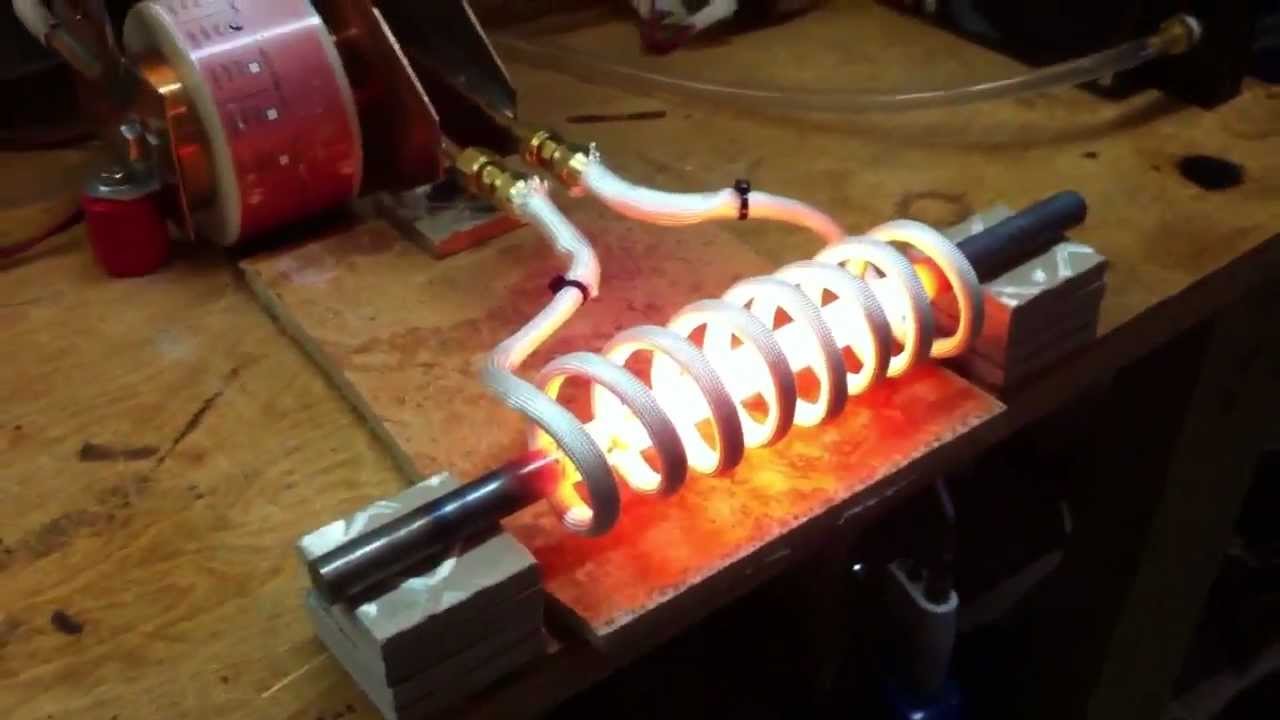
Eddy-current testing
Eddy current testing (also commonly known as eddy current testing and ECT) is one of many electromagnetic testing methods used in non-destructive testing (NDT) that uses electromagnetic induction to detect and characterize surface and subsurface defects in conductive materials.
Speedometers
Eddy currents are also used in speedometers to indicate the speed of vehicles. A speedometer has a magnet that rotates with the speed of the vehicle. The magnet is in an aluminum drum that is gently pivoted and held in place by a hairspring. When the magnet rotates, eddy currents are built up in the drum, which counteracts the movement of the magnet. A torque is applied to the drum in the opposite direction, causing the drum to deflect at an angle dependent on vehicle speed.
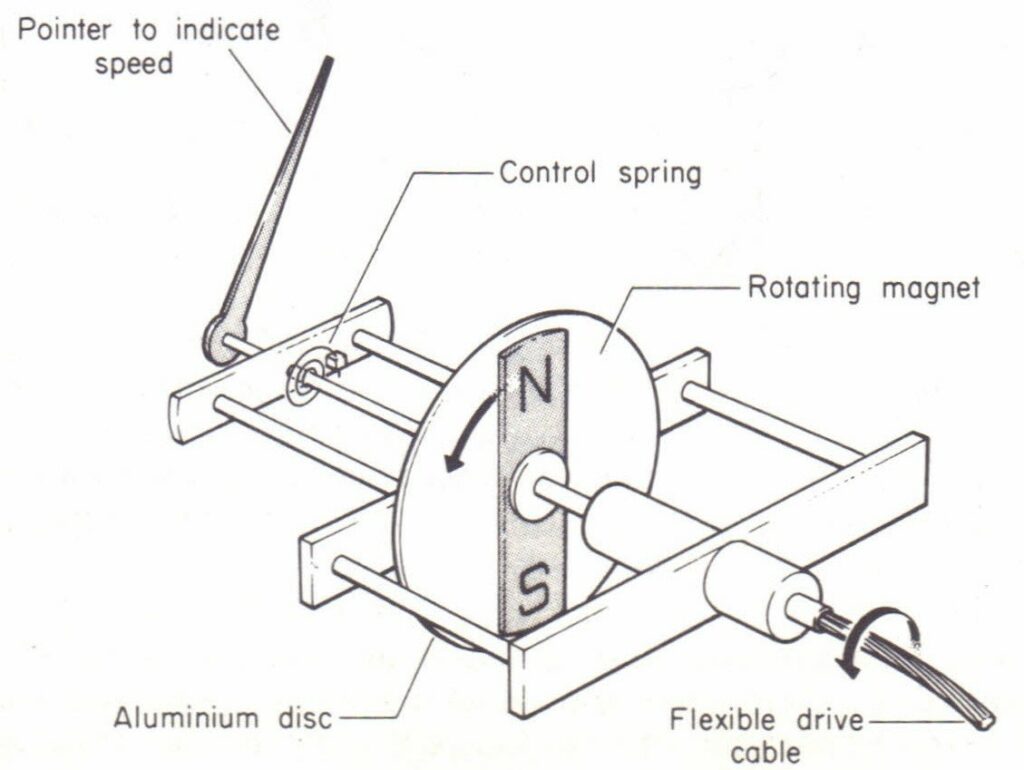
Some other applications of eddy currents
- Eddy-current testing
- Electric meters (electromechanical induction meters)
- Induction heating
- Proximity sensor (displacement sensors)
- Vending machines (detection of coins)
- Coating thickness measurements
- Sheet resistance measurement
- Eddy’s current separator for metal separation
- Mechanical speedometers
Frequently Asked Questions – FAQs
What are eddy currents?
Loops of electrical current, are induced within conductors by a changing magnetic field in the conductor according to Faraday’s law of induction.
What do the eddy currents look like?

Eddy currents look like eddies or whirlpools.
Who discovered Eddy Current?
French physicist Léon Foucault (1819–1868) is credited with having discovered eddy currents. In 1855, he discovered that the force required for the rotation of a copper disk becomes greater when it is made to rotate between the poles of a magnet, the disk at the same time becoming heated by the eddy current induced in the metal.
What is the frequency in eddy current?
The supply frequency usually used for the eddy current heating ranges from 10 kHz to 40 kHz.
How does resistance affect eddy currents?
The resistance felt by the eddy currents in a conductor causes Joule heating and the amount of heat generated is proportional to the current squared. However, for applications like motors, generators, and transformers, this heat is considered wasted energy, and as such, eddy currents need to be minimized.
What is the purpose of eddy’s current testing?
Eddy current testing is most commonly used to inspect surfaces and tubes. It is an incredibly sensitive testing method and can identify even very small flaws or cracks in a surface or just beneath it. On surfaces, ETC can be done with both ferromagnetic and non-ferromagnetic materials.
What factors affect eddy currents?
The greater the conductivity of a material, the greater the flow of eddy currents on the surface. Permeability, or the ease at which a material can be magnetized, also affects frequency. In fact, the depth of penetration decreases significantly with an increase in permeability.
Stay tuned with Laws Of Nature for more useful and interesting content.

